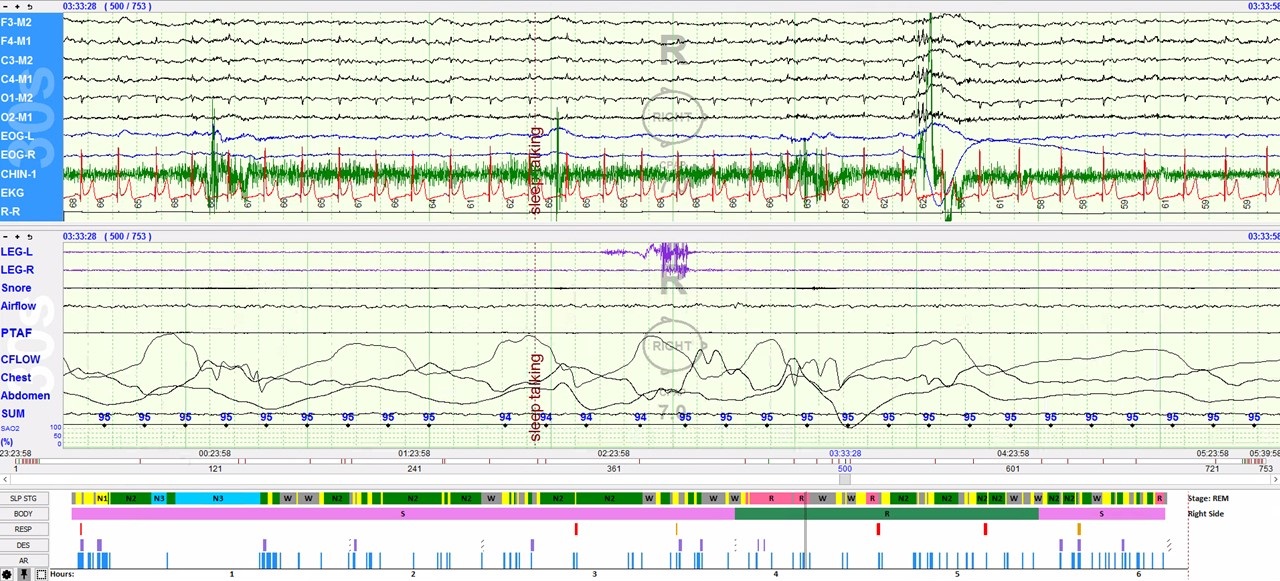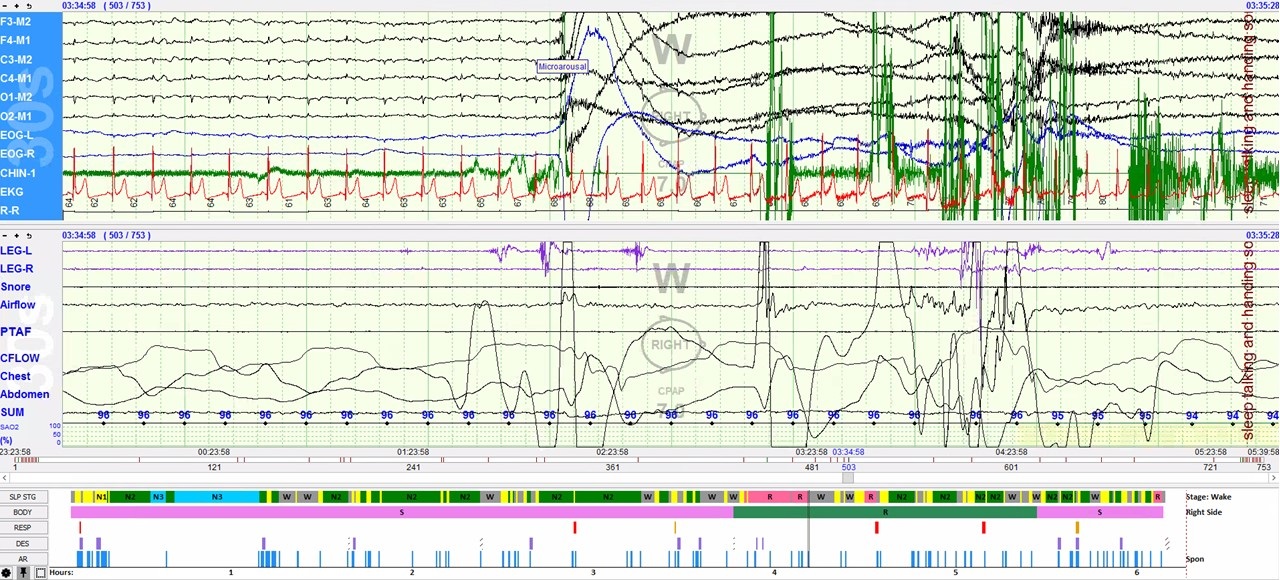

Correct!
5. Overnight laboratory polysomnography
The patient's initial diagnostic assessment revealed severe obstructive sleep apnea, which supported the initiation of CPAP therapy. The patient's excessive daytime sleepiness could be attributed to OSA, sleep fragmentation from dream enactment behavior, idiopathic hypersomnia, narcolepsy, delayed sleep phase, insufficient sleep syndrome, nocturnal seizure, or iatrogenic impact of seizure medication. The persistent symptoms of sleep fragmentation, dream enactment behavior, and excessive daytime somnolence warranted further evaluation with attended lab polysomnography to record the patient’s sleep while he was using CPAP. This study showed resolution of apneic events with use of the CPAP machine. Despite adequate control of the patient’s sleep apnea, the following two images are examples of REM without atonia and Dream Enactment Behavior. Figure 1 shows sleep talking during REM sleep. In Figure 2 the patient is observed waking up from REM sleep acting out a dream.

Figure 1. This image shows increased chin tone in stage REM sleep. Sleep talking was observed and recorded by the sleep technologist.

Figure 2. This image shows transition from stage REM to Wake while acting out a dream. The movement observed and recorded by sleep technologist denotes the patient sleep talking and handing something to someone with transition to wake. To view Figure 2 in a separate enlarged window click here.
What is the most likely diagnosis based on the history and overnight polysomnography? (Click on the correct answer to be directed to the third of five pages)